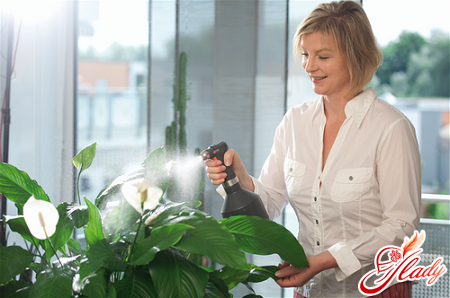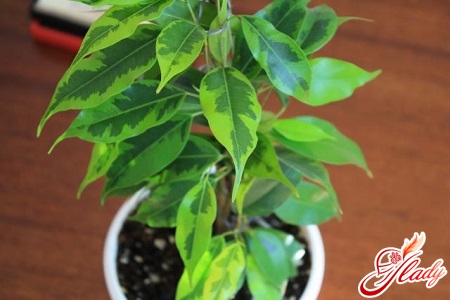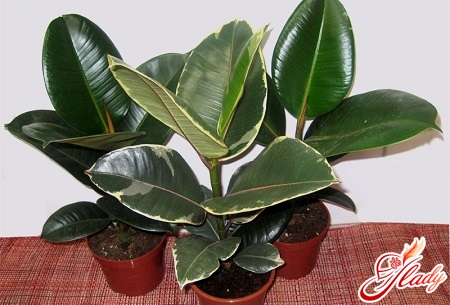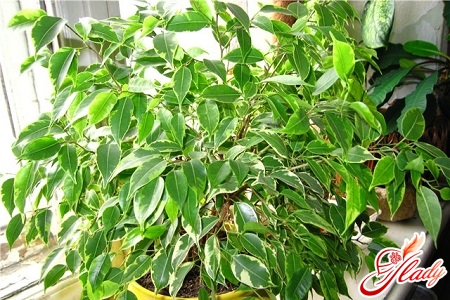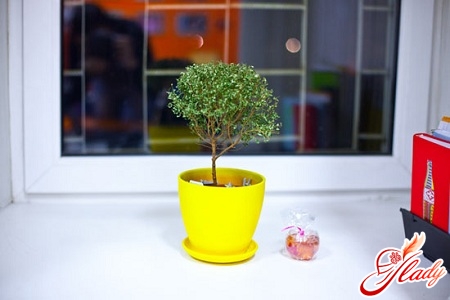 So they waited. Spring! Blissfully squinting at the warm (already warm!) Sun, we meticulously inspect our "land" and look forward to the start of a new garden and vegetable garden season. Well, let the affairs do not aggravate, even if the snow does not come down everywhere, let the spring puddles smack under your feet ... The main thing is that the garden is awake. And we, like a beloved child, are ready to wash, comb, nourish and reap. It is clear that everything in the garden craves our care and guardianship. So let's start, for example, with the green carpet of our garden - the lawn. After all, in fact, caring for a lawn in the spring is very similar to caring for a newly awakened child. But even if (from your point of view) and not very similar, then all the same efforts to "bring to life" of the snow that emerged from under the snow cover will have to be applied a lot. What do we need to do? Here is a short list of all the resuscitative and recreational procedures that make up the lawn care in the spring:
So they waited. Spring! Blissfully squinting at the warm (already warm!) Sun, we meticulously inspect our "land" and look forward to the start of a new garden and vegetable garden season. Well, let the affairs do not aggravate, even if the snow does not come down everywhere, let the spring puddles smack under your feet ... The main thing is that the garden is awake. And we, like a beloved child, are ready to wash, comb, nourish and reap. It is clear that everything in the garden craves our care and guardianship. So let's start, for example, with the green carpet of our garden - the lawn. After all, in fact, caring for a lawn in the spring is very similar to caring for a newly awakened child. But even if (from your point of view) and not very similar, then all the same efforts to "bring to life" of the snow that emerged from under the snow cover will have to be applied a lot. What do we need to do? Here is a short list of all the resuscitative and recreational procedures that make up the lawn care in the spring:
- remove all last year's withered grass, remove the "winter" debris and comb the lawn;
- if our lawn has reached the age of one year, then we roll it up;
- we feed fertilizers (it is better complex, but it is possible and special);
- if our green carpet covers clay soil, then we spend sanding;
- We fight with weeds (yes, in the spring!);
- we carry out minor cosmetic repairs: "darn" carpet, sowing seeds or laying a ready sod.
It would seem that there are not so many procedures. But they need to be conducted in good faith and in good quality. Let's look at how.
Preparatory work
Care for the lawn at the beginning of the season will start withpreparatory works. To begin with, we completely free the lawn from the snow, if it is still lying in secluded corners. The ice crust is neatly shoveled, and the snow is scattered to a sunny place. We clean and deepen the drainage grooves for rapid removal of thawed water. And patiently, we wait for the complete drying of the lawn. We do not forget that this expectation must be accompanied by a control over the very process of melting snow. We make sure that it melts evenly so that puddles do not appear on the lawn, and if they appear, they do not stagnate. At this time, we minimize any movement on the wet lawn, so that traces, potholes and ruts do not damage the sod. At the same time, we carry out the first top dressing with a complex fertilizer enriched in nitrogen. At the rate of thirty-fifty grams per square meter scatter fertilizer throughout the lawn (during the melting of snow residues and drying the soil, the fertilizer granules will dissolve). After waiting for the lawn to dry, proceed to combing. 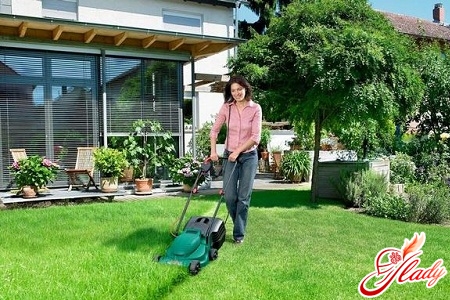
Carding the lawn
In fact, this procedure has quite scientificthe names "verification" and "scarification". Why do you need a spring hairdo? The fact is that during the fall and winter hibernation, a so-called felt is formed on the lawn. This is, first of all, the caked and compressed parts of the lawn grass, winter garbage, fallen leaves, twigs, traces of the life of birds and insects. In addition to felting, the soil forms a dry, solid crust. This is the very felt we need to comb out, and crust to loosen. If we leave everything as it is, then not only will we provide oxygen starvation to our lawn, but also contribute to the emergence of grass diseases and the settlement of insect pests. So caring for lawn in the form of vertical and scarification is simply vital (for the lawn, of course). It is best to conduct this procedure by ordinary rake. But if you have a vertex, you can use it, setting it so that it only slightly "scratches" the soil. First we take a twisted rake and we go through them across and across the lawn (maybe more than once). After the twisted rakes we arm ourselves with fan rails and again - along and across, but with slightly less effort. As a result, we collect all garbage and plant remains, as well as slightly loosen the soil. We do not try to take away the rake with the help of a garden vacuum cleaner, but if we do not have it, we collect it with our hands. If during the melting of snow did not manage to make the first spring top dressing, then we do it immediately after the combing procedure. And then we proceed to the next procedure - respiratory gymnastics.
Breathing exercises for the lawn
This is just an integral part of the overall carelawn. This procedure is called aeration. Its essence is in the artificial saturation of the soil with air, which helps oxidation of organic substances and assimilation of nitrogen (if you do not know, then assimilate its aerobic bacteria). In addition, aeration allows you to save the sod from the accumulated carbon dioxide over the winter, which slows down and even stops the growth of lawn grass. For this procedure, came up with special devices, which are called aerators. Different models of this technique have different teeth: root-forming, cutting, solid, or hollow. But the absence of a special device should not in any way place an aeration. This can be done with the help of ordinary garden forks. We take forks with simple or hollow teeth and methodically we pass through the entire lawn, piercing the earth to a depth of centimeters at ten to fifteen (but not less than eight). It's clear that we hardly have enough for the whole area of strength and patience, so for more frequent punctures, we select only areas with the strongest compaction of the sod. The rest of the lawn area is aerated selectively. Well, half the work is done. It remains a little more and we can assume that the main procedures for spring lawn care have been completed. Let's start fighting weeds! 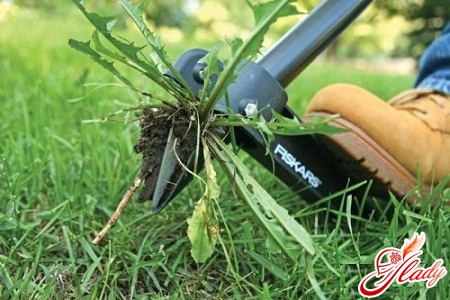
Weed control
Oh, these ubiquitous weeds! And the lawn for them is not an obstacle: they grow to themselves, as if nothing had happened and even adapt to a regular haircut. Of course, if the kind of "clogged" unnecessary grass and lawn flowers does not bother you, then this procedure can be skipped. But keep in mind that soon the lawn will turn from cultural to natural. Although this version of the lawn is not so bad, just less aesthetic. If the weeds on your lawn are absolutely unwelcome guests, then these guests will have to "spend". Yes, it is also care for the lawn, and we can get rid of weeds only mechanically or chemically. The mechanical method is nothing more than ordinary weeding. If there are very few weeds (or you just love to weed), then proceed to this procedure immediately after aeration of the lawn. By the way, on small lawns and for large weeds, weeding can be very effective, especially if you use a special scapula or root extractor. But if this method of fighting does not appeal to you, then there is nothing left to do but resort to chemicals. In the fight against weeds we will be helped by herbicides - chemical preparations for the destruction of weeds. For lawn we choose herbicides of selective action, which are not dangerous for lawn grass. Instructions for use look directly at the preparation. In extreme (and especially severe) cases, we also use herbicides of continuous action, for example, the well-known "Roundup". But it must be applied very, very carefully, gently lubricating the leaves of individual weeds and not letting it get on the lawn grass. Well, it is best (for a greater effect) we fight weeds and mechanically, and chemically - comprehensively! And in parallel with the destruction of weed, we also carry out repairs to our "carpet": we cut the edges, sow seeds in bald spots or "darn" them with ready-made sod, for example, pieces of rolled lawn. By the way, caring for a roll lawn after winter is almost nothing different from caring for an ordinary lawn. It is also necessary to comb, feed, aerate and remove the weeds. And in May, you can already do the first haircut. And then with a sense of accomplishment, enjoy the silk green carpet in your garden. And to receive thus not only physical pleasure (barefoot and legs or foots on travke!), But aesthetic.




